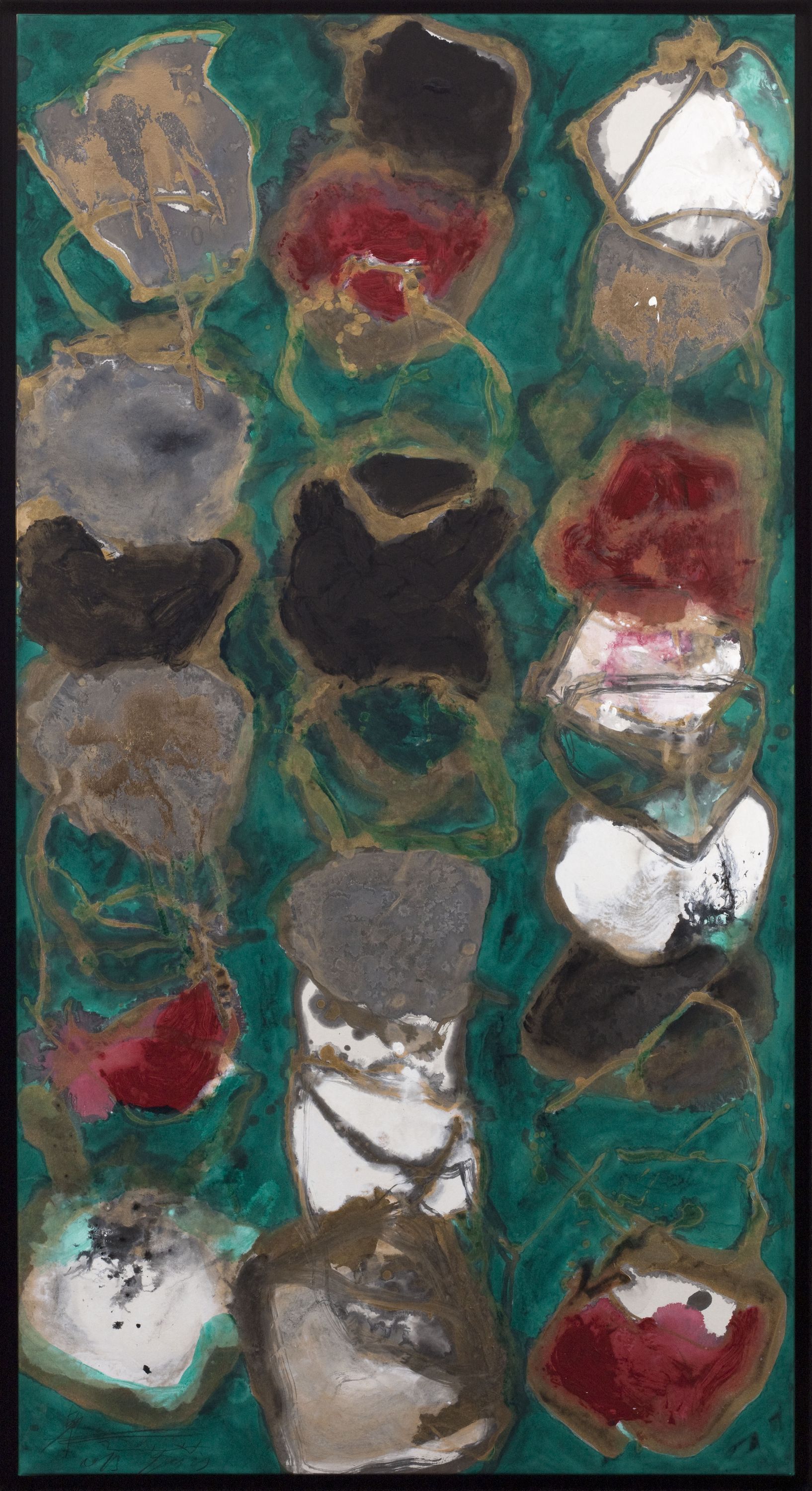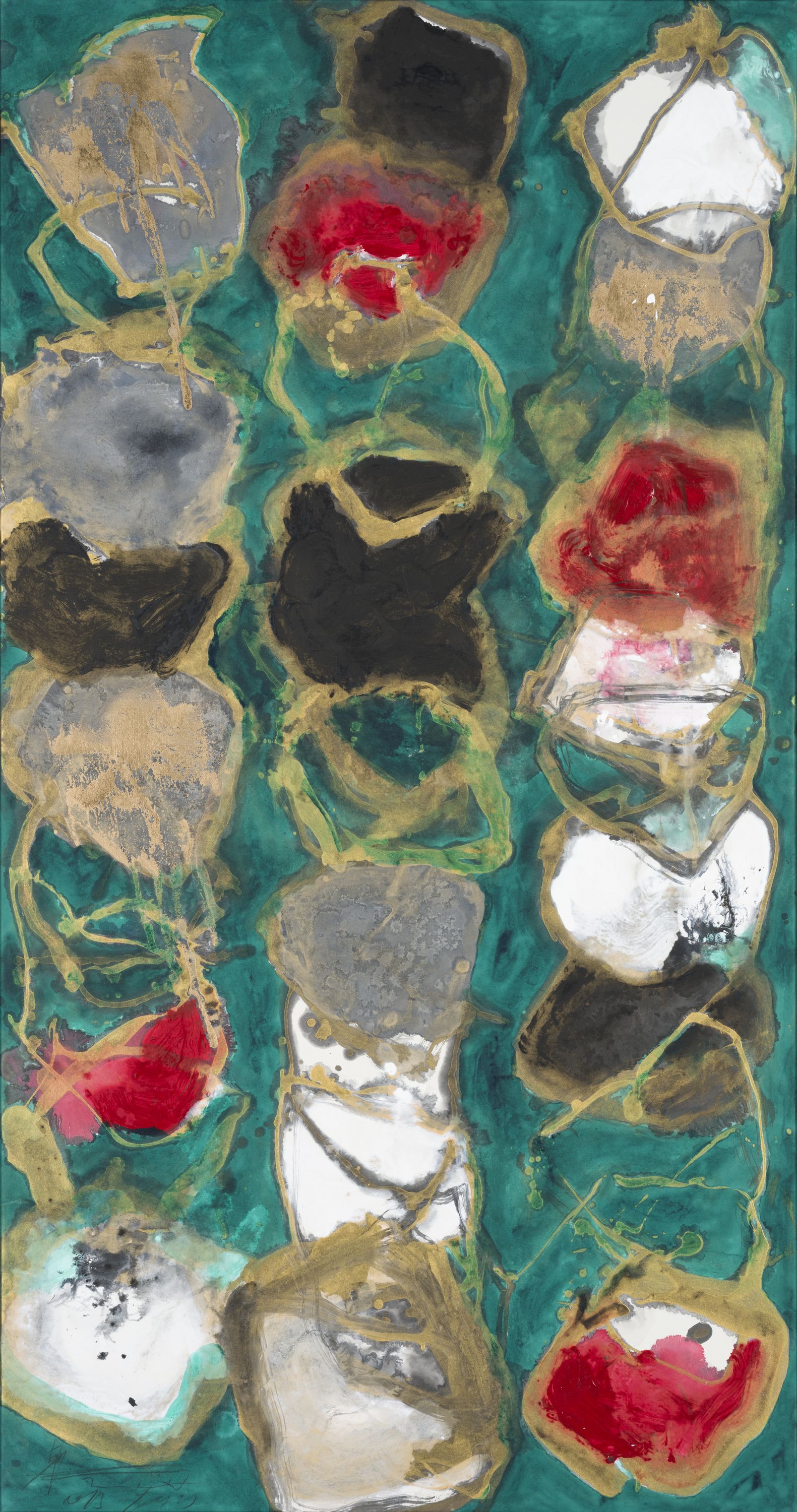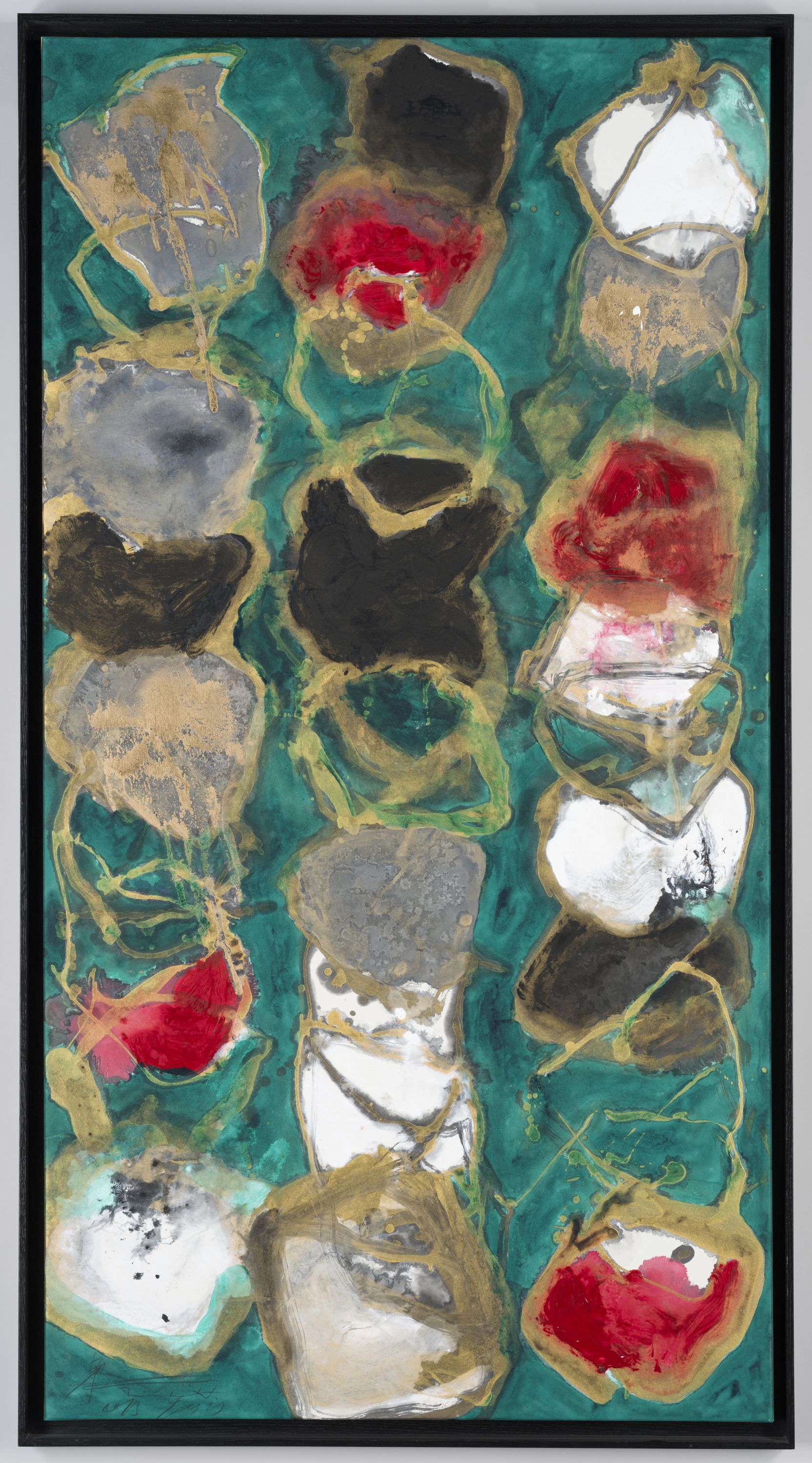
Peacock
Papier, Encre, Peinture à l'acrylique
Peinture, Calligraphie
Achat
M.C. 2014-29
Wei Ligang is an artist who is extremely representative of the renewal of a Chinese art directly inspired by its traditions. Despite the highly pictorial nature of his works, Wei Ligang is primarily a calligrapher.
He trained in calligraphy while he was studying mathematics at Tianjin University. He learned both from the Japanese model, which profoundly transformed the practice of calligraphy through the formal interplay of contemporary art, and the presence in Tianjin of masters of the discipline such as Li Henian and Wang Xuezhong. After two years spent teaching mathematics, he became a teacher of calligraphy himself and furthered his training through the study and copying of ancient models.
He sought a new style of calligraphy that would combine the stringent demands of the traditional discipline and a contemporary aesthetic. To this end he learnt painting techniques that he introduced in his calligraphic works and began a processes of stylisation of the characters that could either make them more complex or reduce them to their simplest form.
In this manner, Peacock is conceived as a cursive calligraphy whose characters are almost totally absent. The circles are a deformation of the square in which the Chinese characters are traced in regular calligraphic script. Their overlapping recalls the cursive style in which the end of one character is in direct continuity with the beginning of the next. The picture as a whole forms a composition whose decorativeness, notably with the use of gold, illustrates the artist’s interpretation of Japanese works.

